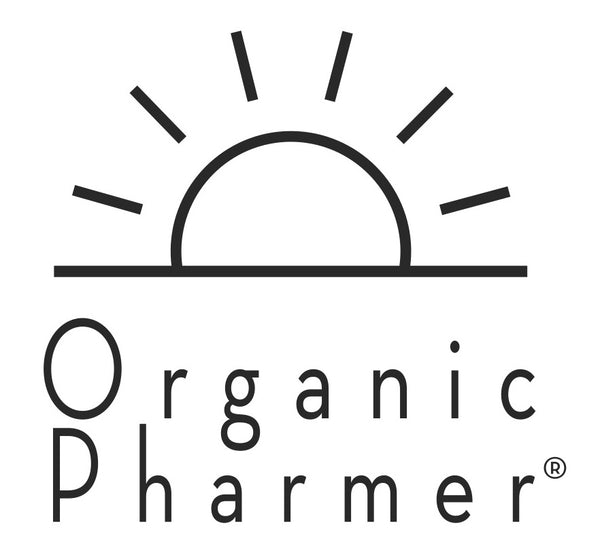
How to Make Dairy-Free Yogurt at Home: Fermentation Recipe for Gut Health
Share
Homemade yogurt is one of the best ways to enjoy a creamy, tangy, and nutritious treat while supporting your gut health. If you're looking for a dairy-free alternative that's rich in probiotics, making your own yogurt at home is not only satisfying but also easy. This recipe uses fermentation to create a gut-friendly yogurt that can be customized with your favorite flavors and textures. Let’s dive into how to make your own dairy-free yogurt from scratch!

Why Make Your Own Dairy-Free Yogurt?
While store-bought dairy-free yogurts are widely available, making your own has many advantages:
- Control over ingredients: You get to choose what goes into your yogurt, ensuring no added preservatives, sugars, or artificial ingredients.
- Cost-effective: Homemade yogurt is cheaper than store-bought options.
- Customizable: You can experiment with flavors, textures, and probiotic strains to match your preferences.
- Gut health: Fermenting your own yogurt means you can choose high-quality probiotics to nourish your digestive system.
Benefits of Fermented Yogurt for Gut Health
Fermentation is a natural process that converts sugars into lactic acid, promoting the growth of healthy bacteria known as probiotics. Probiotics play a vital role in:
- Boosting digestion: The probiotics in yogurt help break down food more efficiently, improving nutrient absorption.
- Supporting immune function: Probiotics help balance your gut microbiome, which directly influences immune health.
- Reducing bloating: Fermented foods can reduce bloating by easing digestive discomfort.
Ingredients for Dairy-Free Yogurt
To make your own dairy-free yogurt, you'll need the following ingredients:
- 1 quart of non-dairy milk (coconut, almond, cashew, soy, or oat milk are great options)
- 1 tablespoon of agar-agar or 2 teaspoons of tapioca starch (for thickening)
- 2 probiotic capsules (make sure they're dairy-free and contain live active cultures)
- 1 tablespoon of maple syrup or honey (optional we recommend skipping this step and adding in if needed when consuming)
- Sterile glass jar for storing the yogurt
- Candy thermometer (optional, to monitor temperature during fermentation)
Note: If your non-dairy milk contains thickeners like guar gum or xanthan gum, you may not need to add additional thickeners.
Step-by-Step Recipe for Dairy-Free Yogurt
1. Gather Ingredients
Before starting, gather your ingredients and make sure you have a clean workspace. Sterilize your jar by running it through the dishwasher or placing it in boiling water for a few minutes.
2. Heat the Milk
Pour your non-dairy milk into a saucepan and bring it to a low simmer over medium heat. You want to heat the milk to around 180°F (82°C). Stir occasionally to prevent sticking. Heating the milk helps to sterilize it and creates the perfect environment for the probiotics to work.
3. Add the Thickener
Whisk in the agar-agar or tapioca starch. Agar-agar helps create a thicker texture similar to traditional yogurt. Continue to stir until the thickener is fully dissolved. If using agar-agar, let the milk boil for 3-4 minutes to activate its thickening properties. For tapioca starch, remove the milk from heat once the starch is dissolved.
4. Cool the Milk
Remove the saucepan from heat and allow the milk to cool down to about 110°F (43°C). It should be warm, but not hot. Too much heat can kill the beneficial bacteria in your probiotics.
5. Add the Probiotic
Open the probiotic capsules and gently stir the contents into the cooled milk. Make sure to stir thoroughly to distribute the probiotics evenly.
6. Ferment the Yogurt
Transfer the milk and probiotic mixture into your sterilized glass jar. Cover the jar with a clean cloth or lid (but don’t screw it on too tightly; the yogurt needs airflow). Let the yogurt ferment in a warm place for 8-24 hours.
Pro Tip: For best results, place the jar in an oven with the light on or in a yogurt maker to maintain a consistent warm temperature (around 100°F or 37°C) during fermentation.
7. Check the Yogurt
After 8 hours, check the yogurt's consistency and flavor. The longer you let it ferment, the tangier the yogurt will become. If it's not tangy enough, leave it for another few hours. After 24 hours, the yogurt should have thickened and developed a tangy flavor.
8. Refrigerate
Once fermented, transfer the yogurt to the refrigerator for at least 4 hours to cool and further thicken. The chilling process will help solidify the yogurt and enhance its flavor.
Customizing Your Dairy-Free Yogurt
Once your yogurt has cooled, it’s ready to enjoy! Here are some creative ideas to elevate your yogurt experience:
- Sweeten it naturally: Add maple syrup, agave, or honey to sweeten your yogurt to taste.
- Flavor it: Mix in vanilla extract, cinnamon, or fresh fruit like berries, mango, or bananas for a burst of flavor.
- Add crunch: Top your yogurt with granola, nuts, seeds, or coconut flakes for added texture.
- Blend it: Turn your yogurt into a smoothie by blending it with frozen fruit, nut butter, or greens for a nutritious start to your day.
Finished Product: Enjoying Your Dairy-Free Yogurt
Your homemade dairy-free yogurt is now ready to be savored! Serve it with fresh fruit, granola, or on its own as a creamy snack. Packed with probiotics, this yogurt is not only delicious but also great for your gut health.
Pair this delicious yogurt with our Dr. Blum's Healing Gluten-Free Granola. Delicious topping for your homemade dairy-free yogurt.

Order Your Gluten Free Granola
Storing and Using Your Homemade Yogurt
Homemade dairy-free yogurt can be stored in the refrigerator for up to a week. If you notice any separation, just give it a stir before eating. You can also use this yogurt as a base for sauces, dressings, or even dairy-free desserts like frozen yogurt or parfaits.
Troubleshooting Tips
- Runny yogurt: If your yogurt is too thin, it may need more time to ferment, or the milk used may not have been thickened enough. Next time, try adding more agar-agar or starch.
- Sour yogurt: If your yogurt is too tangy, it likely fermented for too long. Shorten the fermentation time on your next batch.
- Chunky texture: This can happen if the milk overheats or cools too slowly. Ensure the milk cools to the right temperature before adding the probiotics.
Gut Health in a Jar
Making your own dairy-free yogurt is a rewarding and simple process that brings a host of benefits to your digestive health. By incorporating live probiotics, you’ll not only improve your digestion but also enjoy a delicious, creamy, and customizable breakfast that fits your dietary needs. Whether you prefer it tangy or mild, thick or smooth, you now have the power to create a probiotic-rich yogurt that supports your gut and keeps your mornings healthy and energized.
FAQs
-
What is the best non-dairy milk for yogurt?
Coconut milk and soy milk tend to produce the creamiest results, but almond and cashew milk are also great options. -
Can I skip the thickener?
Yes, but the yogurt will be thinner, more like a drinkable yogurt. Thickener helps replicate the creaminess of traditional yogurt. -
How can I make the yogurt tangier?
Allow it to ferment for longer, but taste it periodically to avoid over-fermentation. -
What is the difference between store-bought probiotics and yogurt probiotics?
Store-bought probiotics offer concentrated strains of beneficial bacteria, while yogurt provides a broader range of live cultures. -
Can I make this yogurt without a yogurt maker?
Yes! Simply keep the jar in a consistently warm place, such as in an oven with the light on or wrapped in a towel in a warm area.

